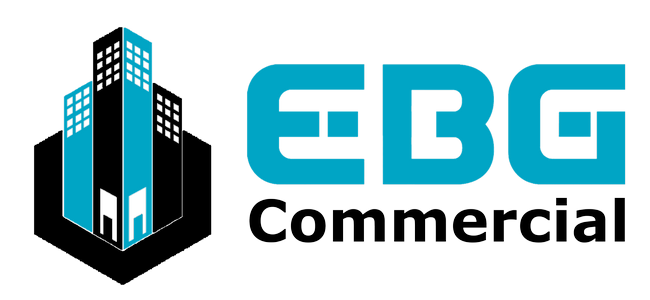Maximizing ROI: Key Strategies for Retail Property Management in DFW
Dallas-Fort Worth (DFW) is a bustling hub of commerce and culture, making it an ideal location for retail property investments. As a retail property manager in DFW, maximizing return on investment (ROI) is paramount. This involves a blend of strategic planning, effective management, and leveraging local market trends. Here are key strategies to help you achieve this goal.
1. Understand the DFW Market Dynamics
Local Economic Factors
DFW is one of the fastest-growing metropolitan areas in the United States, with a robust economy driven by diverse industries including technology, finance, healthcare, and transportation. Understanding these economic drivers is crucial for retail property management. For instance, areas with tech company clusters might see higher demand for retail spaces catering to young professionals, such as cafes, gyms, and coworking spaces.
Demographic Insights
DFW’s population is diverse and rapidly expanding. Analyzing demographic trends can help tailor your retail offerings to meet the needs of specific customer segments. For example, areas with a high concentration of families might benefit from family-oriented retail spaces like toy stores, educational centers, and family restaurants.
Competitive Landscape
Assessing the competition in the area can provide insights into what works and what doesn’t. This includes understanding the mix of national chains and local businesses, their pricing strategies, and customer service levels. Regularly conducting competitive analysis helps in positioning your retail property to stand out and attract tenants.
2. Optimize Tenant Mix
Balanced Tenant Portfolio
A balanced tenant mix enhances the appeal of your retail property, attracting a broader customer base and increasing foot traffic. Aim for a mix of anchor tenants (large, well-known brands) and smaller specialty shops. Anchor tenants can draw significant foot traffic, benefiting smaller retailers.
Focus on Synergy
Select tenants whose businesses complement each other. For instance, placing a coffee shop near a bookstore or a gym next to a health food store creates synergy, encouraging customers to visit multiple stores in one trip. This increases tenant satisfaction and customer retention.
Adapt to Trends
Stay abreast of retail trends and adapt your tenant mix accordingly. For example, the rise of experiential retail—where customers seek engaging and immersive shopping experiences—can inform your tenant selection. Including businesses that offer unique experiences, like escape rooms, interactive workshops, or live demonstrations, can enhance the attractiveness of your property.
3. Enhance Property Aesthetics and Amenities
Curb Appeal
First impressions matter. Invest in landscaping, clean and well-maintained exteriors, and attractive signage. These elements create a welcoming atmosphere, attracting customers and making your property more appealing to potential tenants.
Modern Amenities
Providing modern amenities can significantly boost the value of your retail property. High-speed internet, ample parking, clean restrooms, and comfortable common areas enhance the shopping experience. Additionally, consider adding amenities like charging stations for electric vehicles, bike racks, and seating areas to cater to diverse customer needs.
Sustainability
Sustainability is increasingly important to consumers and businesses. Implementing eco-friendly practices, such as energy-efficient lighting, recycling programs, and water conservation measures, can attract environmentally conscious tenants and customers. Moreover, green certifications can enhance your property’s reputation and marketability.
4. Implement Effective Marketing Strategies
Online Presence
In today’s digital age, a strong online presence is crucial. Ensure your property is listed on major commercial real estate platforms and has a professional, user-friendly website. Utilize high-quality images and virtual tours to showcase your property.
Social Media Engagement
Leverage social media platforms to promote your property and engage with potential tenants and customers. Regular updates, promotions, and community engagement activities can build a loyal online following and drive foot traffic to your retail spaces.
Community Involvement
Participating in local events and sponsoring community activities can boost your property’s visibility and reputation. Hosting events such as farmers’ markets, holiday celebrations, or local art exhibitions can draw crowds and enhance your property’s standing in the community.
5. Optimize Lease Agreements
Flexible Lease Terms
Offer flexible lease terms to attract a diverse range of tenants. Shorter leases may appeal to startups and small businesses, while longer leases provide stability with established brands. Additionally, consider including options for lease renewals and expansions to accommodate growing businesses.
Rent Structures
Implement variable rent structures that can align with tenant performance. For instance, percentage leases, where tenants pay a base rent plus a percentage of their sales, can create a win-win situation. This approach provides tenants with lower fixed costs and incentivizes property managers to support tenant success.
Incentives and Concessions
Offering incentives such as rent-free periods or contributions to tenant improvements can attract high-quality tenants and reduce vacancy rates. These concessions can be particularly effective for securing anchor tenants or attracting businesses to newly developed areas.
6. Leverage Technology
Property Management Software
Invest in robust property management software to streamline operations. Features such as automated rent collection, maintenance scheduling, and tenant communication can improve efficiency and tenant satisfaction.
Data Analytics
Utilize data analytics to gain insights into tenant performance, market trends, and property operations. Analyzing data on foot traffic, sales patterns, and customer demographics can inform strategic decisions and optimize property management practices.
Smart Building Technologies
Implement smart building technologies to enhance operational efficiency and tenant comfort. Automated lighting, HVAC systems, and security features can reduce operating costs and attract tech-savvy tenants.
7. Regular Maintenance and Upgrades
Preventive Maintenance
Regularly scheduled maintenance prevents minor issues from escalating into costly repairs. A well-maintained property not only retains its value but also ensures tenant satisfaction and reduces turnover rates.
Capital Improvements
Invest in capital improvements that enhance the property’s appeal and functionality. Upgrading HVAC systems, renovating common areas, and modernizing storefronts can attract new tenants and justify higher rents.
Compliance and Safety
Ensure your property complies with all local regulations and safety standards. Regular inspections and prompt address of any issues protect your investment and provide a safe environment for tenants and customers.
Conclusion
Maximizing ROI in retail property management in DFW requires a comprehensive and proactive approach. By understanding local market dynamics, optimizing tenant mix, enhancing property aesthetics and amenities, implementing effective marketing strategies, optimizing lease agreements, leveraging technology, and maintaining regular property upkeep, you can significantly increase the value and profitability of your retail property. With these strategies, you’ll be well-equipped to navigate the competitive DFW market and achieve sustained success in your retail property management endeavors.


